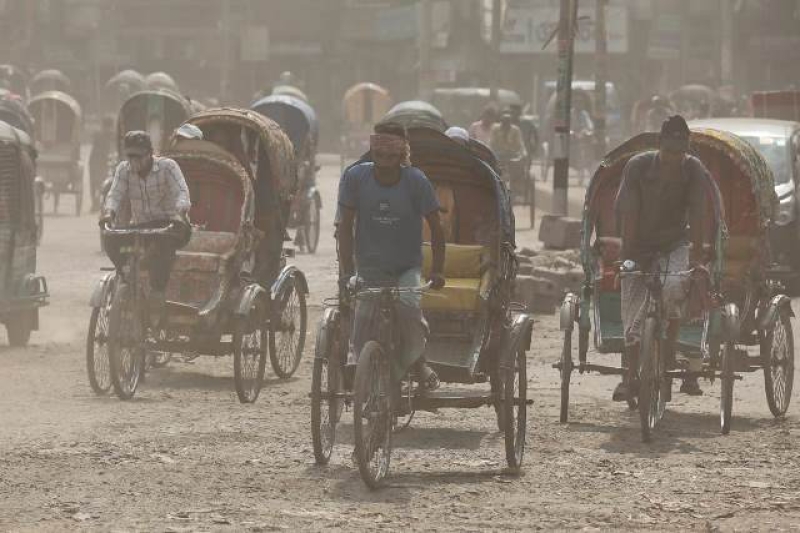- Body of Osman Hadi Returns to Dhaka From Singapore Late |
- Fakhrul condemns attacks on media, calls for unity, justice |
- 2 cops among 4 hurt in clash outside Indian Assit H.C. in Ctg |
- Inqilab Moncho urges people to avoid violence |
- Hadi’s death: Prothom Alo, Daily Star offices set afire |
Dhaka’s air continues to be ‘moderate’

Dhaka’s air continues to be ‘moderate’
Dhaka, Jun 12 - Dhaka has ranked 17th on the list of cities worldwide with the worst air quality with an AQI score of 88 at 9:30 am this morning (June 12, 2024).
Dhaka’s air this morning was classified as 'moderate', according to the air quality index.
Bahrain's Manama, Democratic Republic of the Congo's Kinshasa and Pakistan' Lahore occupied the first, second and third spots on the list, with AQI scores of 175, 171 and 170, respectively.
When the AQI value for particle pollution is between 50 and 100, air quality is considered ‘moderate’, between 101 and 150, air quality is considered ‘unhealthy for sensitive groups’, between 150 and 200 is ‘unhealthy’, between 201 and 300 is said to be 'very unhealthy', while a reading of 301+ is considered 'hazardous', posing serious health risks to residents.
The AQI, an index for reporting daily air quality, informs people how clean or polluted the air of a certain city is and what associated health effects might be a concern for them.
The AQI in Bangladesh is based on particulate matter (PM10 and PM2.5), NO2, CO, SO2, and ozone.
Dhaka has long been grappling with air pollution issues. Its air quality usually turns unhealthy in winter and improves during the monsoon.
As per World Health Organization (WHO), air pollution kills an estimated seven million people worldwide every year, mainly due to increased mortality from stroke, heart disease, chronic obstructive pulmonary disease, lung cancer, and acute respiratory infections.-UNB

